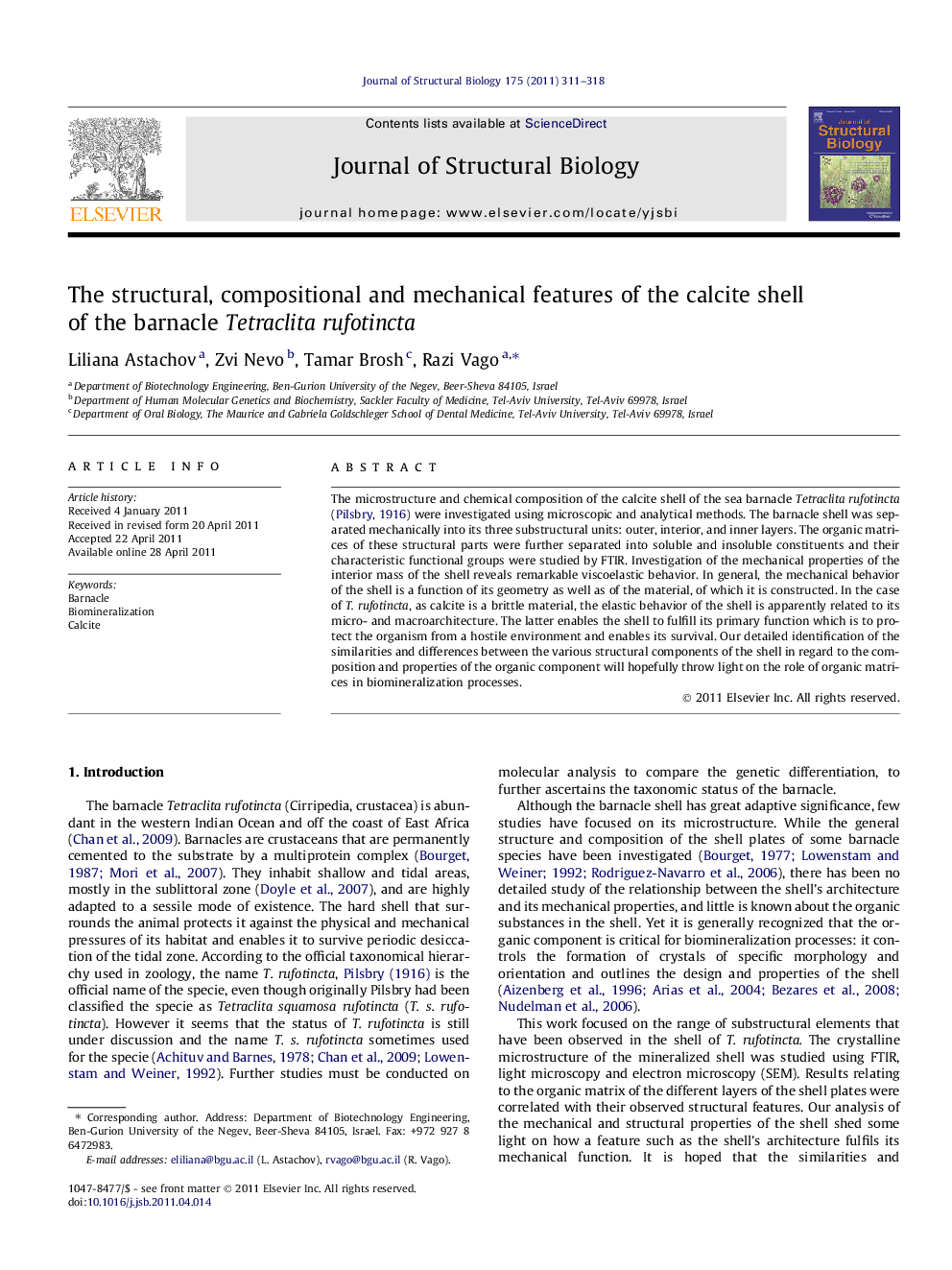| Article ID | Journal | Published Year | Pages | File Type |
|---|---|---|---|---|
| 5914779 | Journal of Structural Biology | 2011 | 8 Pages |
Abstract
The microstructure and chemical composition of the calcite shell of the sea barnacle Tetraclita rufotincta (Pilsbry, 1916) were investigated using microscopic and analytical methods. The barnacle shell was separated mechanically into its three substructural units: outer, interior, and inner layers. The organic matrices of these structural parts were further separated into soluble and insoluble constituents and their characteristic functional groups were studied by FTIR. Investigation of the mechanical properties of the interior mass of the shell reveals remarkable viscoelastic behavior. In general, the mechanical behavior of the shell is a function of its geometry as well as of the material, of which it is constructed. In the case of T. rufotincta, as calcite is a brittle material, the elastic behavior of the shell is apparently related to its micro- and macroarchitecture. The latter enables the shell to fulfill its primary function which is to protect the organism from a hostile environment and enables its survival. Our detailed identification of the similarities and differences between the various structural components of the shell in regard to the composition and properties of the organic component will hopefully throw light on the role of organic matrices in biomineralization processes.
Keywords
Related Topics
Life Sciences
Biochemistry, Genetics and Molecular Biology
Molecular Biology
Authors
Liliana Astachov, Zvi Nevo, Tamar Brosh, Razi Vago,
